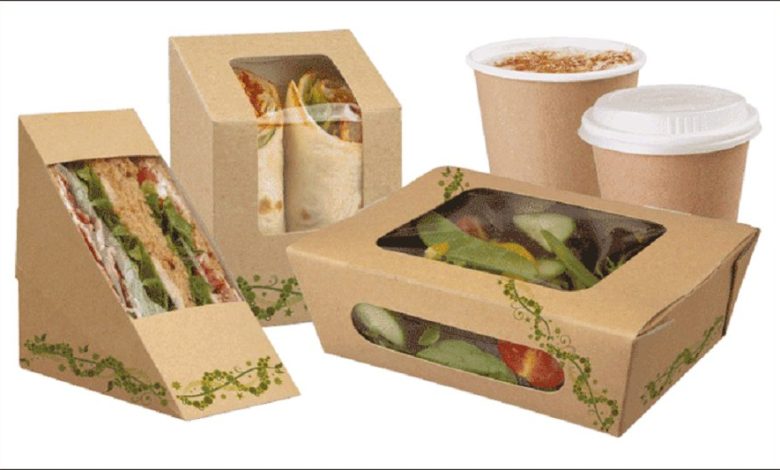Environmentally Friendly Packaging: A Sustainable Solution for a Greener Future

In today’s global landscape, where sustainability and environmental responsibility are at the forefront, the concept of environmentally friendly packaging has gained significant attention. With the detrimental impact of traditional packaging materials on the planet becoming increasingly apparent, businesses and consumers are seeking alternatives that minimize environmental harm while still fulfilling their functional requirements.
Understanding Environmentally Friendly Packaging
1. Definition and Purpose
Environmentally friendly packaging, also known as sustainable or green packaging, refers to the use of materials and design strategies that minimize the ecological footprint associated with packaging products. Its primary purpose is to reduce waste, conserve resources, and promote the use of renewable materials throughout the packaging lifecycle.
2 Importance of Sustainable Packaging
Environmentally friendly packaging plays a crucial role in mitigating the environmental impact of consumer goods. By adopting sustainable practices, businesses can significantly reduce carbon emissions, conserve energy and water resources, and minimize waste generation. Furthermore, sustainable packaging helps preserve biodiversity, protect ecosystems, and contribute to the overall well-being of our planet.
Benefits of Environmentally Friendly Packaging
2.1 Reduction in Environmental Impact
One of the key benefits of environmentally friendly packaging is its ability to minimize the environmental impact throughout its lifecycle. Sustainable packaging materials, such as biodegradable or compostable options, break down naturally, reducing waste accumulation in landfills and oceans. Additionally, using recycled or renewable materials helps conserve natural resources and reduce energy consumption associated with manufacturing processes.
2.2 Improved Brand Reputation
Implementing sustainable packaging solutions can enhance a company’s brand reputation and attract environmentally conscious consumers. As consumers become more aware of the environmental consequences of packaging waste, they are increasingly inclined to support businesses that prioritize sustainability. By adopting environmentally friendly packaging practices, companies can position themselves as responsible corporate citizens and gain a competitive edge in the market.
2.3 Cost Savings and Efficiency
Contrary to popular belief, environmentally friendly packaging can also lead to cost savings for businesses. By optimizing packaging designs, companies can reduce material usage and transportation costs. Moreover, sustainable practices often encourage process improvements and operational efficiencies, resulting in long-term financial benefits.
Strategies for Implementing Sustainable Packaging
3.1 Source Reduction and Optimization
One of the primary strategies for sustainable packaging is source reduction, which involves minimizing the overall amount of packaging material used. This can be achieved through design optimization, lightweighting, and right-sizing packaging to eliminate unnecessary waste.
3.2 Material Selection
Careful material selection is essential in achieving sustainable packaging goals. Biodegradable, compostable, recycled, and renewable materials should be prioritized over conventional options. This approach ensures that packaging has minimal environmental impact throughout its lifecycle.
3.3 Design and Innovation
Innovative packaging designs can significantly contribute to sustainability efforts. Packaging solutions that facilitate easy disassembly for recycling or reuse, incorporate reusable features, or promote efficient product-to-package ratios are gaining popularity in the market.
3.4 Life Cycle Assessment
Conducting a life cycle assessment (LCA) allows businesses to comprehensively evaluate the environmental impact of their packaging choices. By considering all stages of the packaging life cycle, from raw material extraction to end-of-life disposal, companies can make informed decisions to minimize environmental burdens.
Types of Environmentally Friendly Packaging Materials
4.1 Biodegradable Packaging
Biodegradable packaging materials are designed to break down naturally through biological processes. They can be derived from plant-based sources or petroleum-based polymers that are engineered to degrade in the environment.
4.2 Compostable Packaging
Compostable packaging materials are designed to biodegrade under specific conditions, such as those found in industrial composting facilities. They offer a sustainable solution for packaging organic products and can be transformed into valuable compost.
4.3 Recycled and Recyclable Packaging
Recycled packaging utilizes materials derived from post-consumer waste or industrial byproducts. Packaging can help reduce the demand for virgin materials by incorporating recycled content. On the other hand, recyclable packaging can be collected and processed for reuse in the manufacturing of new products.
4.4 Renewable and Plant-Based Packaging
Renewable and plant-based packaging materials are sourced from renewable resources like plants and trees. They offer a sustainable alternative to fossil fuel-based plastics and help reduce carbon emissions associated with traditional packaging materials.
4.5 Reusable Packaging
Reusable packaging focuses on durability and extended product lifecycles. Businesses can significantly reduce waste and the need for repetitive manufacturing processes by designing packaging that can be reused multiple times.
Examples of Companies Embracing Sustainable Packaging
5.1 Patagonia: Leading the Way
Patagonia, an outdoor clothing company, has been at the forefront of sustainability initiatives, including packaging. They use 100% recycled and recyclable packaging materials and actively encourage their customers to return used products for recycling.
5.2 Loop: Reinventing Packaging
Loop is a revolutionary platform that partners with various consumer brands to provide reusable packaging solutions. Customers receive products in durable, refillable containers, which are collected, cleaned, and reused, creating a circular economy model.
5.3 Seventh Generation: Eco-Conscious Brand
Seventh Generation, a leading household and personal care product company, has been committed to using environmentally friendly packaging materials. They prioritize recycled content and plant-based plastics to minimize their overall environmental impact.
Challenges and Considerations in Adopting Environmentally Friendly Packaging
6.1 Cost and Affordability
One of the significant challenges companies face when transitioning to environmentally friendly packaging is the potential increase in costs. Sustainable packaging materials, especially those in the early stages of development, can be more expensive than traditional options. However, as demand grows and technology advances, costs will likely decrease.
6.2 Regulatory Compliance
Adhering to regulatory standards and certifications can pose challenges for businesses. Navigating the complex landscape of packaging regulations, certifications, and labeling requirements requires careful attention to detail and continuous monitoring of evolving industry standards.
6.3 Consumer Education and Perception
Educating consumers about the benefits of environmentally friendly packaging is crucial for widespread adoption. Some consumers may be concerned about sustainable packaging materials’ performance, durability, or price. Clear communication and transparency can help address these concerns and build trust with consumers.
The Future of Environmentally Friendly Packaging
7.1 Technological Advancements
Continued advancements in technology will play a significant role in the future of environmentally friendly packaging. From innovative materials and intelligent packaging designs to improved recycling and waste management systems, technology will drive sustainability in the packaging industry.
7.2 Collaborative Efforts
Collaboration among stakeholders, including businesses, governments, and consumers, will be essential for driving sustainable packaging initiatives forward. Sharing knowledge, resources, and best practices can accelerate developing and adopting environmentally friendly packaging solutions.
7.3 Consumer Demand and Market Growth
As consumer awareness and demand for sustainable products increase, the market for environmentally friendly packaging is expected to grow significantly. Companies that proactively embrace sustainability and prioritize environmentally friendly packaging will be well-positioned to meet consumer expectations and gain a competitive advantage.
Conclusion
Environmentally friendly packaging is a crucial component of sustainable business practices. Businesses can minimize their environmental impact by adopting strategies such as source reduction, material selection, and innovative design while still meeting their packaging needs. The use of biodegradable, compostable, recycled, renewable, and reusable materials provides viable alternatives to traditional packaging options. As more companies and consumers prioritize sustainability, the future of packaging holds immense potential for a greener and more eco-conscious world.



